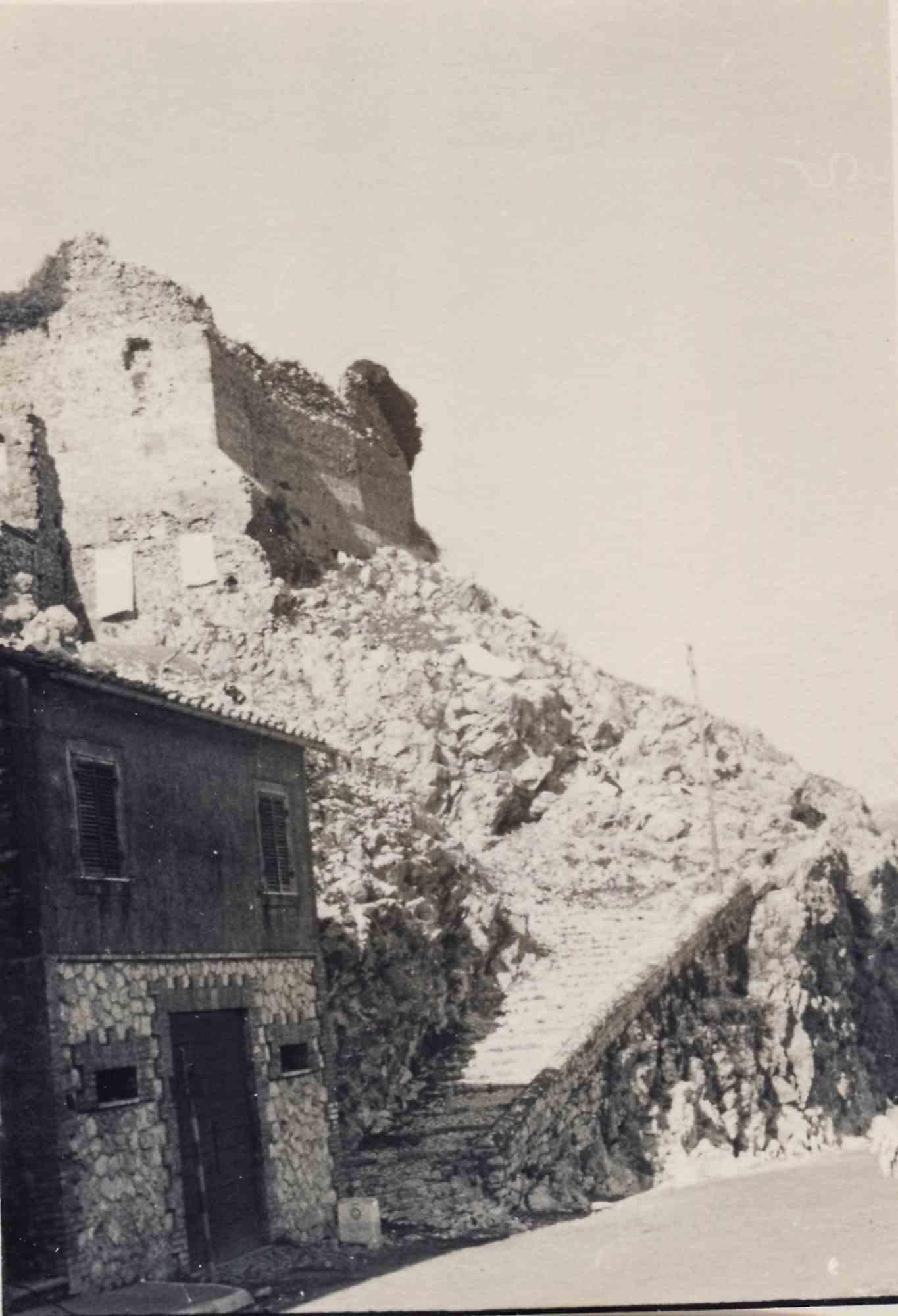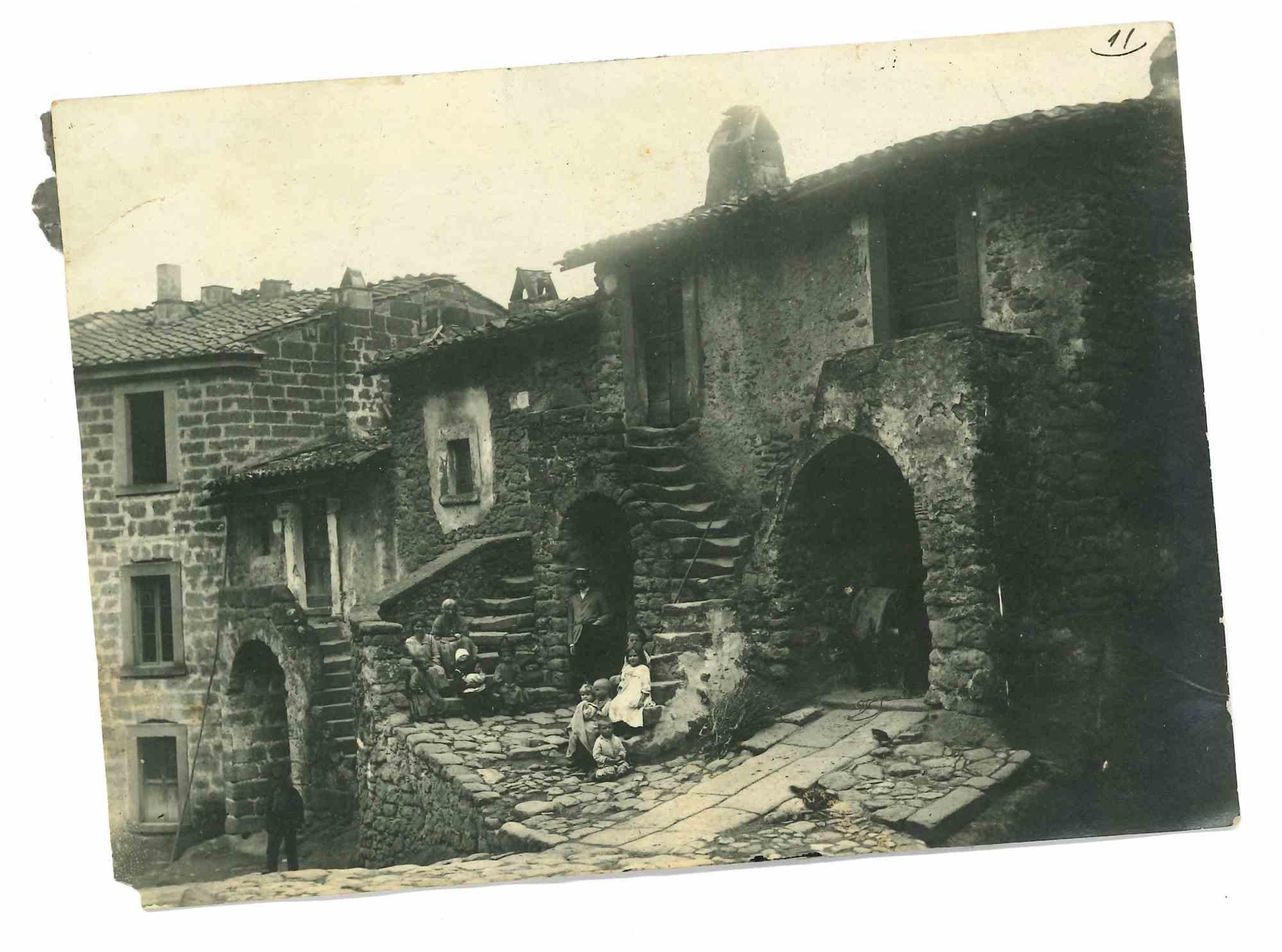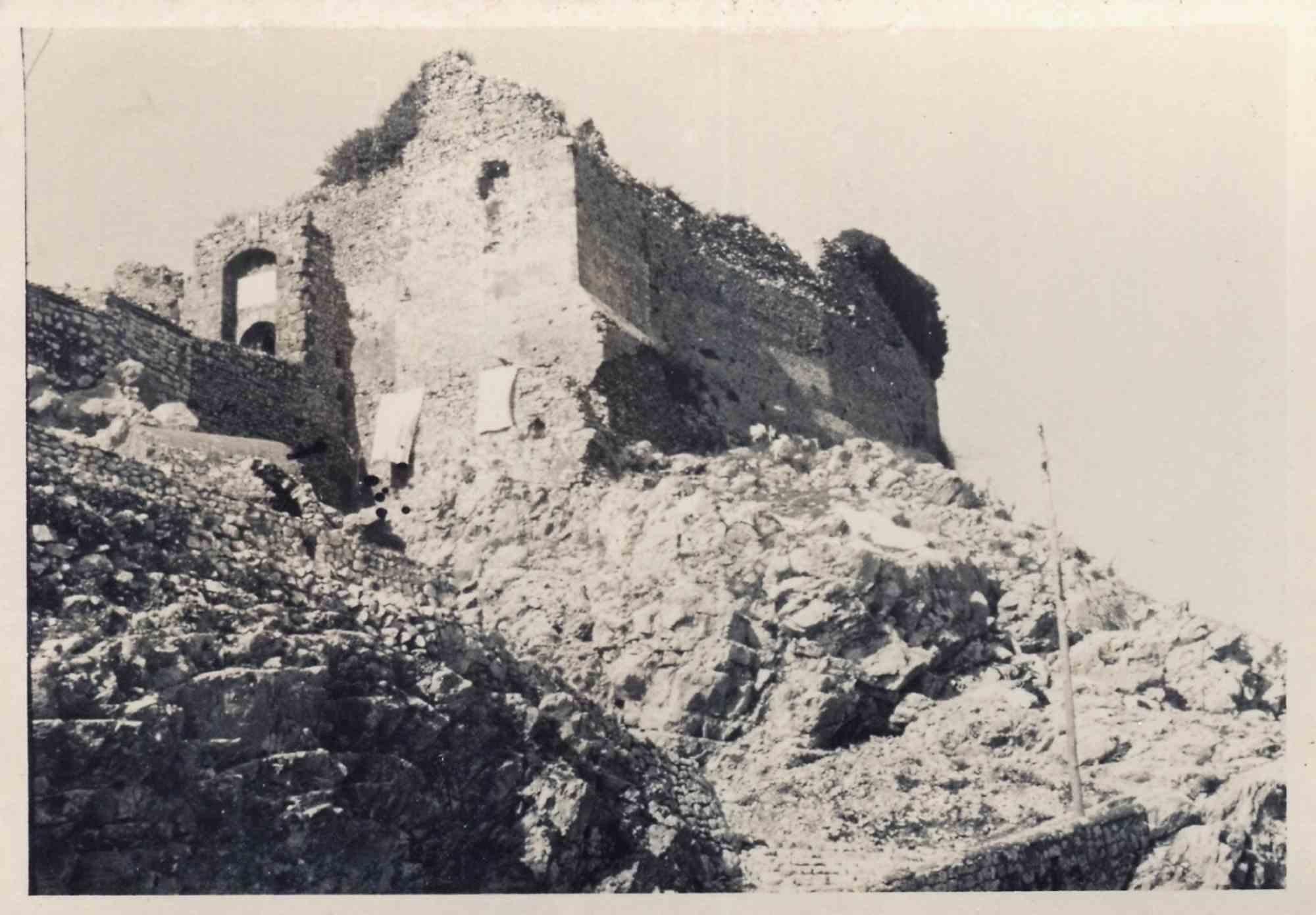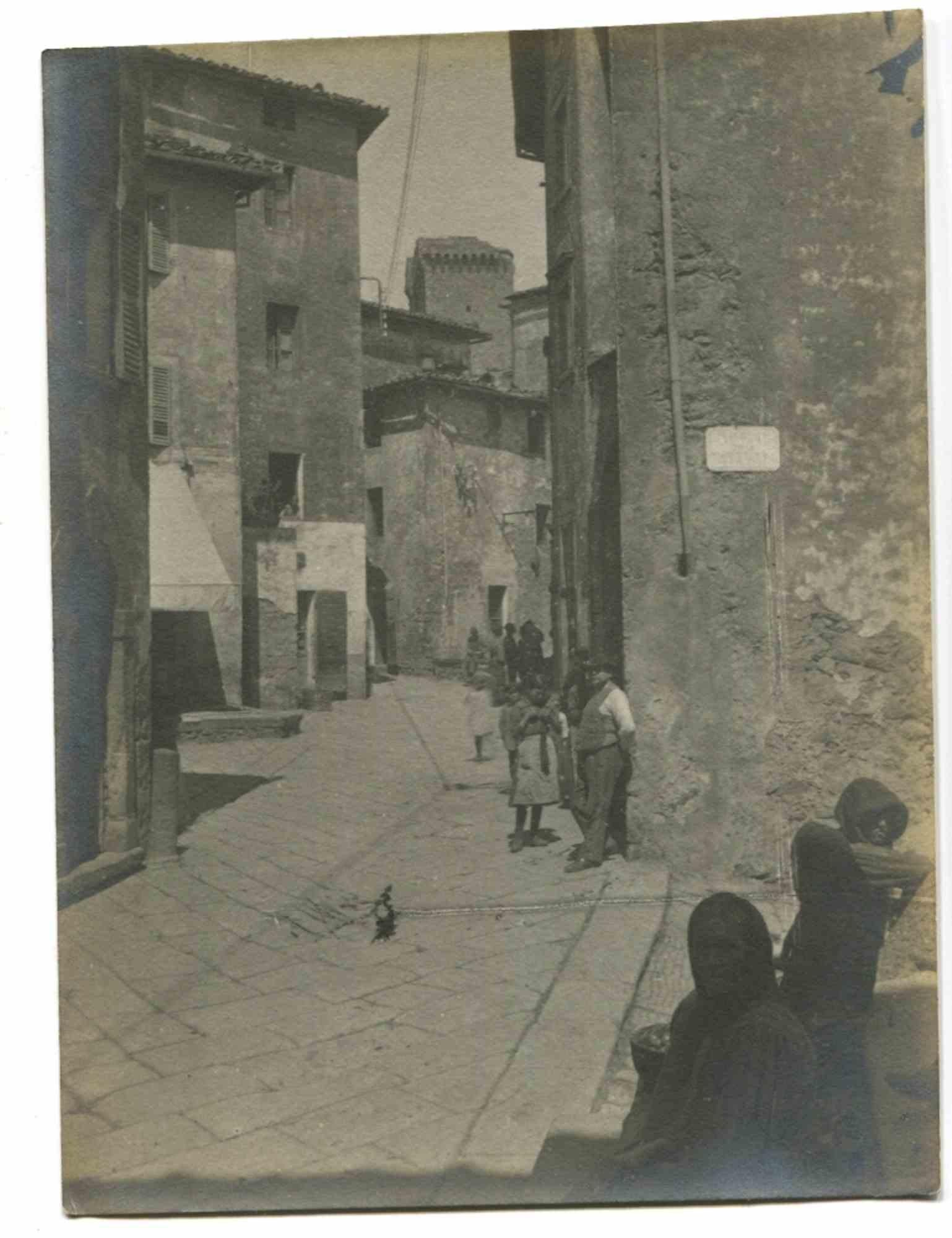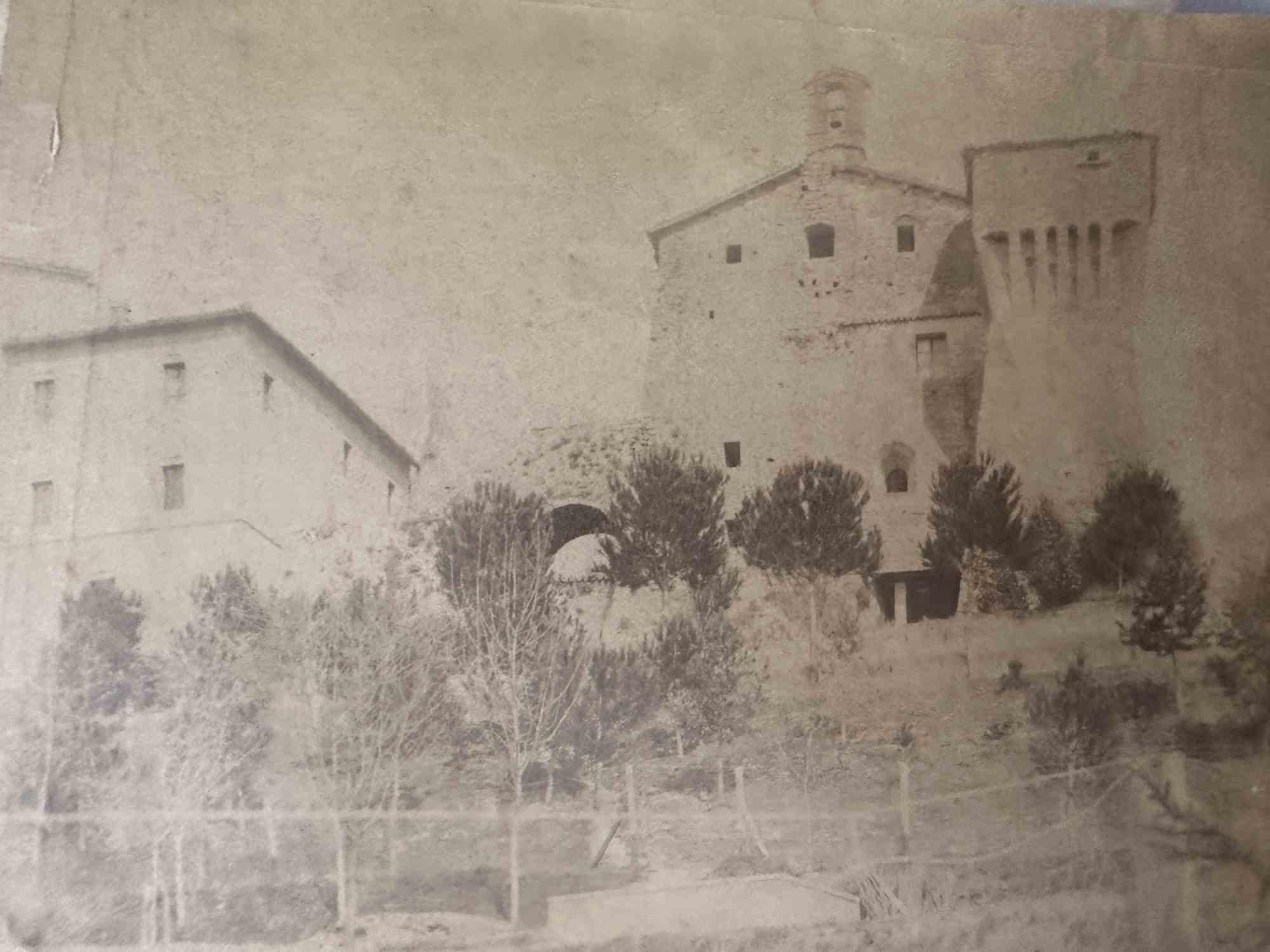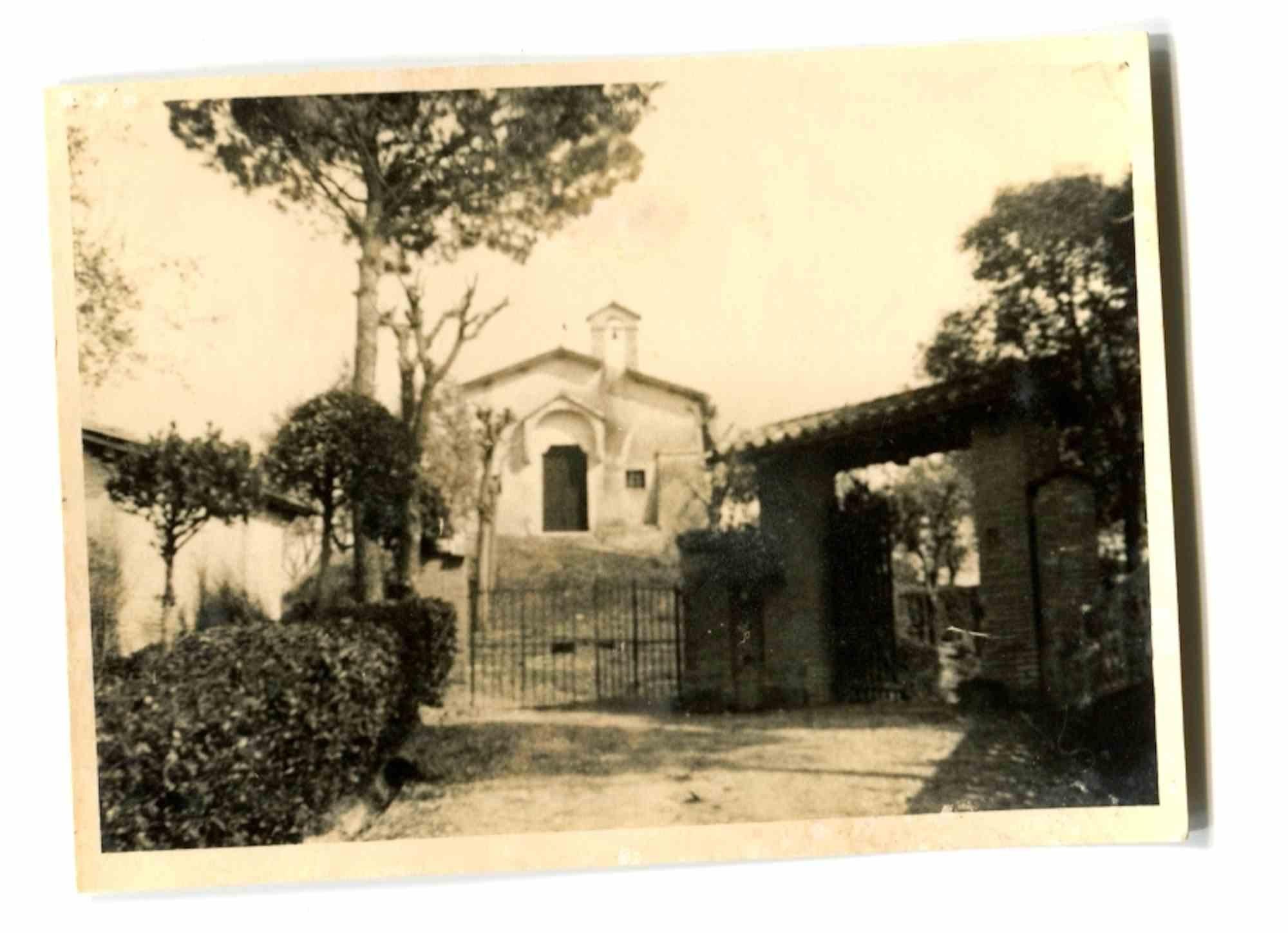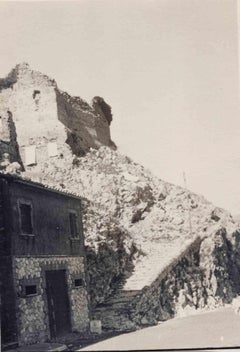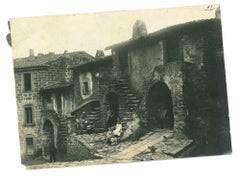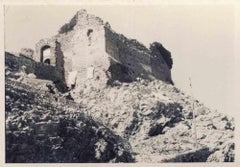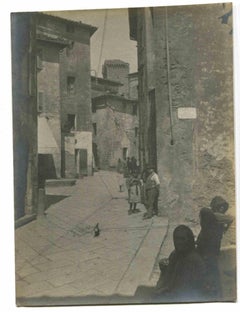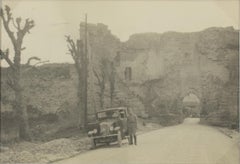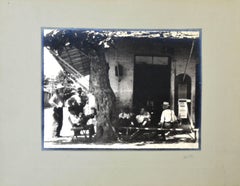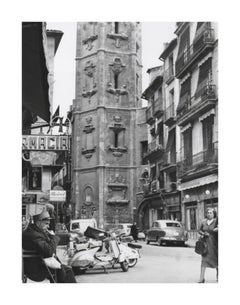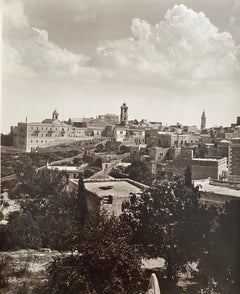Items Similar to Old days Photo - Burg - Vintage Photo - Mid-20th Century
Want more images or videos?
Request additional images or videos from the seller
1 of 2
UnknownOld days Photo - Burg - Vintage Photo - Mid-20th CenturyMid-20th Century
Mid-20th Century
$83.84
£62.13
€70
CA$114.46
A$127.33
CHF 66.75
MX$1,555.97
NOK 849.97
SEK 800.13
DKK 532.97
Shipping
Retrieving quote...The 1stDibs Promise:
Authenticity Guarantee,
Money-Back Guarantee,
24-Hour Cancellation
About the Item
Old days Photo - Burg is a black and white vintage photo, realized in the mid-20th century.
Good conditions and aged.
It belongs to a historical and Nostalgic album including historical moments, places, families, artworks, royal families, and political events, meticulously captured.
- Creation Year:Mid-20th Century
- Dimensions:Height: 3.94 in (10 cm)Width: 2.76 in (7 cm)Depth: 0.08 in (2 mm)
- Medium:
- Movement & Style:
- Period:
- Framing:Framing Options Available
- Condition:Insurance may be requested by customers as additional service, contact us for more information.
- Gallery Location:Roma, IT
- Reference Number:Seller: T-1481411stDibs: LU650314278522
About the Seller
4.9
Platinum Seller
Premium sellers with a 4.7+ rating and 24-hour response times
1stDibs seller since 2017
7,617 sales on 1stDibs
Typical response time: 3 hours
- ShippingRetrieving quote...Shipping from: Monaco, Monaco
- Return Policy
Authenticity Guarantee
In the unlikely event there’s an issue with an item’s authenticity, contact us within 1 year for a full refund. DetailsMoney-Back Guarantee
If your item is not as described, is damaged in transit, or does not arrive, contact us within 7 days for a full refund. Details24-Hour Cancellation
You have a 24-hour grace period in which to reconsider your purchase, with no questions asked.Vetted Professional Sellers
Our world-class sellers must adhere to strict standards for service and quality, maintaining the integrity of our listings.Price-Match Guarantee
If you find that a seller listed the same item for a lower price elsewhere, we’ll match it.Trusted Global Delivery
Our best-in-class carrier network provides specialized shipping options worldwide, including custom delivery.More From This Seller
View AllOld days Photo - Burg - Vintage Photo - Early 20th Century
Located in Roma, IT
Old days Photo - Burg is a black and white vintage photo, realized in the early 20th century.
Good conditions and aged.
It belongs to a historical and Nostalgic album including his...
Category
Early 20th Century Modern Figurative Photography
Materials
Photographic Paper
The Old Days - Historical Photo - Early 20th Century
Located in Roma, IT
The Old Days - Historical Photo is a black and white vintage photo, realized in the early 20th century.
It belongs to historical album including historical moment, royal families, ...
Category
Early 20th Century Modern Figurative Photography
Materials
Photographic Paper
Old Days Photo - Old Burg - Vintage Photo - Early 20th Century
Located in Roma, IT
Old days Photo - Old Burg is a black and white vintage photo, realized in the early 20th century.
Good conditions and aged.
It belongs to a historical and Nostalgic album including...
Category
Early 20th Century Modern Figurative Photography
Materials
Photographic Paper
Historical Photo - Vintage Photo - Early 20th Century
Located in Roma, IT
Historical Photo is a vintage photo, realized in the Early 20th Century .
The artwork is a well-balanced composition.
Category
Early 20th Century Contemporary Figurative Photography
Materials
Photographic Paper
Historical Photo - Vintage photo - Early 20th Century
Located in Roma, IT
Historical Photo is a black and white vintage photo, realized in the early 20th century.
It belongs to a historical album including historical moments, royal families, and politica...
Category
Early 20th Century Contemporary Figurative Photography
Materials
Photographic Paper
Old Days - Historical Photo - Vintage Photo - 1940s
Located in Roma, IT
Old Days - Historical Photo is a vintage black and white photograph realized in the 1940s.
Good conditions.
Category
1940s Contemporary Figurative Photography
Materials
Photographic Paper
You May Also Like
French Soldier nearby Paris, 1926 - Silver Gelatin Black and White Photography
Located in Atlanta, GA
A unique original silver gelatin black and white photograph. In the countryside near Paris, France, April 1926.
A soldier in uniform poses in front of the ruins of a house destroyed...
Category
1920s Art Deco Black and White Photography
Materials
Silver Gelatin
Early 20th Century Photograph -- Sidewalk Club of the Motherlode
By Sigismund Blumann
Located in Soquel, CA
"Sidewalk Club of the Motherlode" a Lithobrome photograh by Sigismund Blumann (American, 1872-1956). Signed "Sigismund Blumann" lower right. Titled "Sidewalk Club of the Motherlode" on verso. Image size, 11.25"H x 13.25"W. Between 1923 and 1932, his pictures were accepted at photographic salons in Amsterdam, Toronto, Rochester, Seattle, and Los Angeles. In 1927, a one-person exhibition of his bromoil prints traveled to camera clubs in Chicago, Akron, Cincinnati, and New York. In addition to bromoil, a process that yields pointillistic images, Blumann utilized such unusual processes as kallitype (Vandyke brown), lithobrome, and pastelograph (the latter two probably his own inventions) to create original photographs using chemical processes he invented.
Sigismund Blumann (1872–1956) (figure 1) was a prominent tastemaker in Californian photography during the 1920s and 1930s. Based in the San Francisco Bay Area for his entire career, he edited magazines, wrote books, and made creative photographs. From 1924 to 1933 Blumann edited Camera Craft, the leading West Coast photographic monthly. Subsequently he established his own periodical, Photo Art Monthly, which he published until 1940. In these two magazines — for over fifteen years — Blumann found a large audience of mainstream pictorial photographers. In addition, he wrote five instructional books on photography...
Category
1920s Realist Black and White Photography
Materials
Photographic Paper, Silver Gelatin
Vintage Paris Landscape
Located in Austin, TX
This stunning vintage image captured by Steve Fontanini features a wonderful capture of a Parisian landscape. A bustling vintage street scene with candid subjects and stunning lines,...
Category
1950s Contemporary Black and White Photography
Materials
Archival Ink, Archival Paper, Digital, Archival Pigment
Vintage Large Albumen Photo Jerusalem Landscape
By American Colony Jerusalem
Located in Surfside, FL
The Original American Colony was a colony established in Jerusalem in 1881 by members of a utopian society led by Anna and Horatio Spafford. Now a hotel in East Jerusalem, it is still known by that name today.
After suffering a series tragic losses following the Great Chicago Fire of 1871 (see hymn "It is Well with My Soul"), Chicago residents Anna and Horatio Spafford led a small American contingent in 1881 to Jerusalem to form a utopian society. The "American Colony," as it became known, was later joined by Swedish Christians. The society engaged in philanthropic work amongst the people of Jerusalem regardless of religious affiliation, gaining the trust of the local Muslim, Jewish, and Christian communities.During and immediately after World War I, the American Colony carried out philanthropic work to alleviate the suffering of the local inhabitants, opening soup kitchens, hospitals, orphanages and other charitable ventures.
Towards the end of the 1950s, the society's communal residence was converted into the American Colony Hotel. The hotel is an integral part of the Jerusalem landscape where members of all communities in Jerusalem still meet. In 1992 representatives from the Palestine Liberation Organization and Israel met in the hotel where they began talks that led to the historic 1993 Oslo Peace Accord.
Panorama of Jerusalem, c. 1890-1920
The Colony moved to the large house of a wealthy Arab landowner, Rabbah Husseini, outside the city walls in Sheikh Jarrah on the road to Nablus. Part of the building was used as a hostel for visitors from Europe and America. A small farm developed with animals, a butchery, a dairy, a bakery, a carpenter's shop, and a smithy. The economy was supplemented by a shop selling photographs, craft items and archaeological artifacts. The American Colonists were embraced by the Jewish and Palestinian communities for their good works, among them, teaching in both Muslim and Jewish schools.
Photography
Around 1900, Elijah Meyers, a member of the American Colony, began taking photographs of places and events in and around the city of Jerusalem. Meyers's work eventually expanded into a full-fledged photographic division within the Colony, including Hol Lars (Lewis) Larsson and G. Eric Matson, who later renamed the effort as the Matson Photographic Service. Their interest in archeological artifacts (such as the Lion Tower in Tripoli pictured here), and the detail of their photographs, led to widespread interest in their work by archeologists. The collection was later donated to the Library of Congress.
World War I
When the Ottoman Empire entered World War I as an ally of Germany in November 1914, Jerusalem and Palestine became a battleground between the Allied and the Central powers...
Category
Late 19th Century Academic Black and White Photography
Materials
Photographic Paper
In the Countryside near Paris in 1926 Silver Gelatin Black and White Photography
By Press Photo
Located in Atlanta, GA
A unique original silver gelatin black and white photograph. In the countryside near Paris, France, April 1926.
A soldier in uniform poses in front of the ruins of a house destroyed...
Category
1920s Art Deco Black and White Photography
Materials
Silver Gelatin
Vintage Large Albumen Photo Jerusalem - House Of The "Rich Man"
By American Colony Jerusalem
Located in Surfside, FL
The Original American Colony was a colony established in Jerusalem in 1881 by members of a utopian society led by Anna and Horatio Spafford. Now a hotel in East Jerusalem, it is still known by that name today.
After suffering a series tragic losses following the Great Chicago Fire of 1871 (see hymn "It is Well with My Soul"), Chicago residents Anna and Horatio Spafford led a small American contingent in 1881 to Jerusalem to form a utopian society. The "American Colony," as it became known, was later joined by Swedish Christians. The society engaged in philanthropic work amongst the people of Jerusalem regardless of religious affiliation, gaining the trust of the local Muslim, Jewish, and Christian communities.During and immediately after World War I, the American Colony carried out philanthropic work to alleviate the suffering of the local inhabitants, opening soup kitchens, hospitals, orphanages and other charitable ventures.
Towards the end of the 1950s, the society's communal residence was converted into the American Colony Hotel. The hotel is an integral part of the Jerusalem landscape where members of all communities in Jerusalem still meet. In 1992 representatives from the Palestine Liberation Organization and Israel met in the hotel where they began talks that led to the historic 1993 Oslo Peace Accord.
Panorama of Jerusalem, c. 1890-1920
The Colony moved to the large house of a wealthy Arab landowner, Rabbah Husseini, outside the city walls in Sheikh Jarrah on the road to Nablus. Part of the building was used as a hostel for visitors from Europe and America. A small farm developed with animals, a butchery, a dairy, a bakery, a carpenter's shop, and a smithy. The economy was supplemented by a shop selling photographs, craft items and archaeological artifacts. The American Colonists were embraced by the Jewish and Palestinian communities for their good works, among them, teaching in both Muslim and Jewish schools.
Photography
Around 1900, Elijah Meyers, a member of the American Colony, began taking photographs of places and events in and around the city of Jerusalem. Meyers's work eventually expanded into a full-fledged photographic division within the Colony, including Hol Lars (Lewis) Larsson and G. Eric Matson, who later renamed the effort as the Matson Photographic Service. Their interest in archeological artifacts (such as the Lion Tower in Tripoli pictured here), and the detail of their photographs, led to widespread interest in their work by archeologists. The collection was later donated to the Library of Congress.
World War I
When the Ottoman Empire entered World War I as an ally of Germany in November 1914, Jerusalem and Palestine became a battleground between the Allied and the Central powers...
Category
Late 19th Century Academic Black and White Photography
Materials
Photographic Paper
More Ways To Browse
Reading Sculpture
Speakers Used
War And Peace
Vintage Dutch Prints
3d Wall Sculpture
White Clay Sculptures
Catalan Paintings
Paris Gallery Poster
Vintage Cartoon Art
30inch Sculpture
Atelier 17
Silk Screen Artists
Vintage Face Drawing
Abstract Relief Sculpture
Leger Mourlot
Vintage February Images
Paintings On Masonite Vintage
18th Century English Painting
